Experiment 2: CandyDrop – The Arduino Candy Dispenser
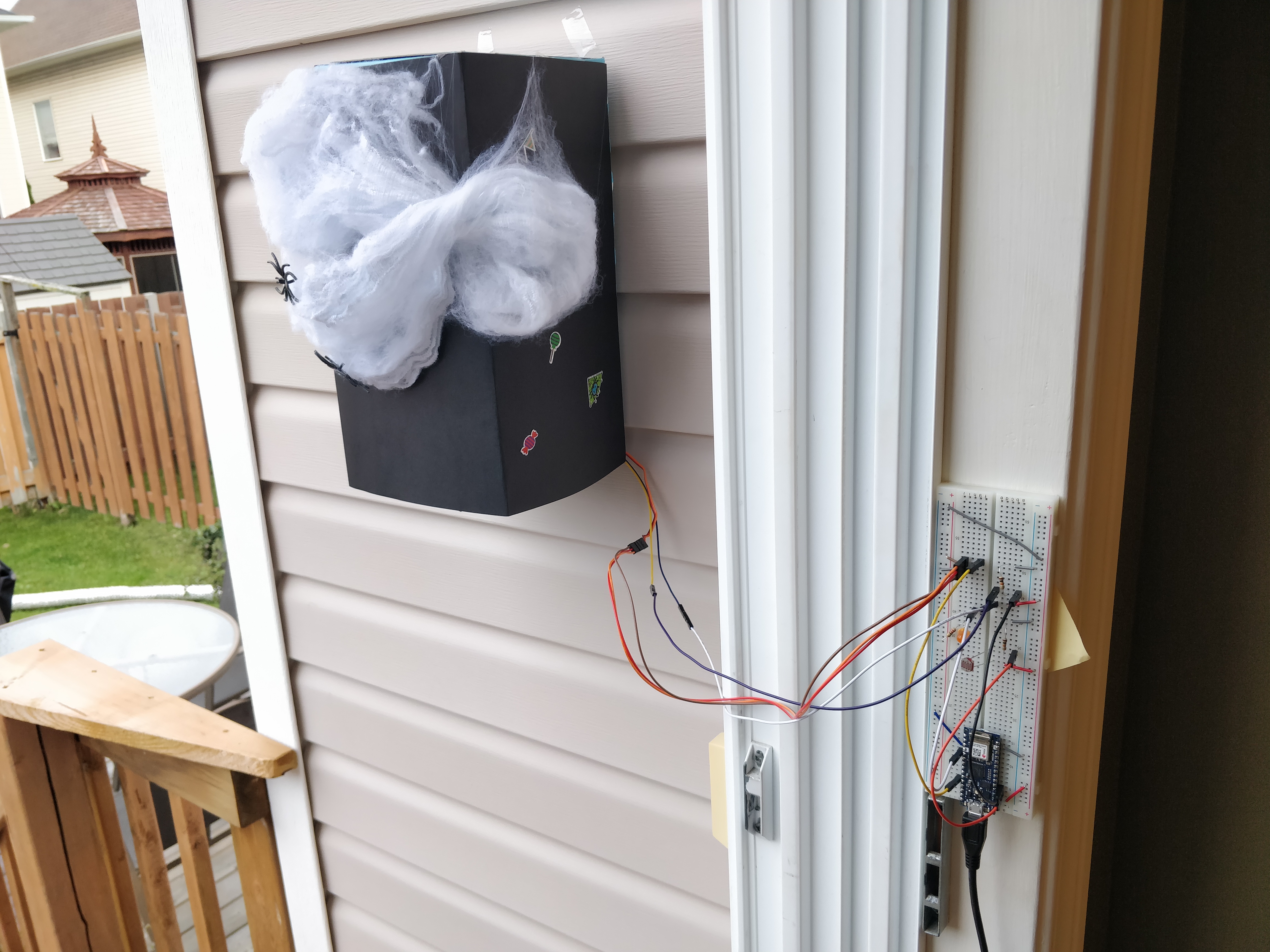
Project description
CandyDrop is a Halloween candy dispenser designed for our socially distanced world! As trick-or-treaters approach the doorway and extend their bags under the CandyDrop, an LED inside the home is switched on, triggered by a light sensor underneath the CandyDrop.
The person in the home can then place their hand over the second light sensor, inside the home, which triggers the dispensing mechanism, controlled by a servo, to drop the candy into the trick-or-treater’s bag.
Process + Experience Video
How it Works / Development / Context
As the cliché goes, we are facing unprecedented times because, of course, of the pandemic. Though I didn’t really celebrate Halloween as a kid (in terms of trick-or-treating and giving candy), I know that the festivities are important to a lot of people, both young and old, here in Canada.
Alas, here in Ottawa, our medical officer of health, Dr. Vera Etches, has cancelled trick-or-treating for this year (Chen 2020). In the spirit, though, I’ve decided to conceptualize a way to distribute candy while maintaining social distancing. This was also the only thing I could think of that would fit the theme of inside/outside (besides the obvious examples shown in the lectures).
I began by researching candy dispensers (using both Arduino or just through manual action) to see if the idea had been implemented before, and how:
- Automatic Halloween Candy Dispenser – Engineering Process: Uses a conveyor belt and the trick-or-treaters had to press a button–not very COVID-friendly. In one of their sketches shown at the beginning of the video, however, there’s a mechanism where a quantity is made ready in a mini bowl, and as it rotates, it stops the flow. Since the servo motor is pretty slow, and I don’t have access to a soldering iron, I decided to implement that idea in my experiment.
- How to make Automatic Candy Machine with Arduino: Uses a proximity sensor, and the candy chute opens in a lateral motion. My worry with this tehnique was that too much candy would fall off.
- Arduino powered candy dispenser / Arduino Süßigkeitenautomat: Uses a lateral motion and a button. This model seemed to work best with small, round, unwrapped candy. I know that unwrapped candy is a big no-no for trick-or-treating, so I passed on this one.
- How to make a Chocolate Dispenser Machine using Arduino Nano, Servo motor & IR Sensor: This example provided an interesting way of controlling the flow of the candy. However, I wanted to avoid building out a complex contraption with cardboard.
- How to Make Candy Dispenser with 3 Different Taste at Home: Use an interesting system where the candy drop is triggered by pushing down on a lever that springs back using an elastic. I also liked that they used plastic bottles to hold the candy.
- Desktop Candy Dispenser: This model required laser cutting, but, I really liked that they made use of the mini-cup idea that was mentioned in the first video.
- How to Build Candy Dispenser: Use a button and eleastics to drop the candy, but buildig the model uses materials that I don’t have access to.
- How to Make Candy Dispenser from Cardboard Easy DIY: Used a cool maze layout to control the flow, but I was trying to stay away from more complex cardboard builds.
Though they weren’t exactly candy dispensers, I was also inspired by these projects:
- Remote Control Pet Feeder: This was a similar idea that was implemented in a very simple manner. It uses a lateral movement to control the flow. This project also gave me the idea of using a plastic bottle as the container.
- Dropping Spider on Doorbell – Halloween Scare Prank: This Halloween themed project inspired my to add fake spider and spider webs to my project, as well as having the candy drop from the bottom.
Once I decided on the mechanism, I purchased some materials: Halloween décor, plastic bottle, cardstock, stickers, and, of course, candy.

I began by building the receiving tube and mini cup that would drop the candy. Next, I attached one of the servo horns to the cup. I then built the sensor system that was connected to the servo with the help of TechMartian’s “Light-Controlled Servo” Instructable.
Afterwards, I added the LED system, tested the entire mechanism, and added some finishing touches with decorations.
Unfortunately, when I was testing the CandyDrop outside for my final set of documentations, the Arduino dropped. Ever since, the servo motor has been glitching and hasn’t been able to drop any candy. Despite troubleshooting the issue over the next few days, I was unable to get the CandyDrop to work again. It’s unfortunate, but at least I got to enjoy the process (and the candy!):
Arduino code hosted on Github
The code can be viewed here: https://github.com/candideu/Arduino-Candy-Dispenser
Circuit diagram
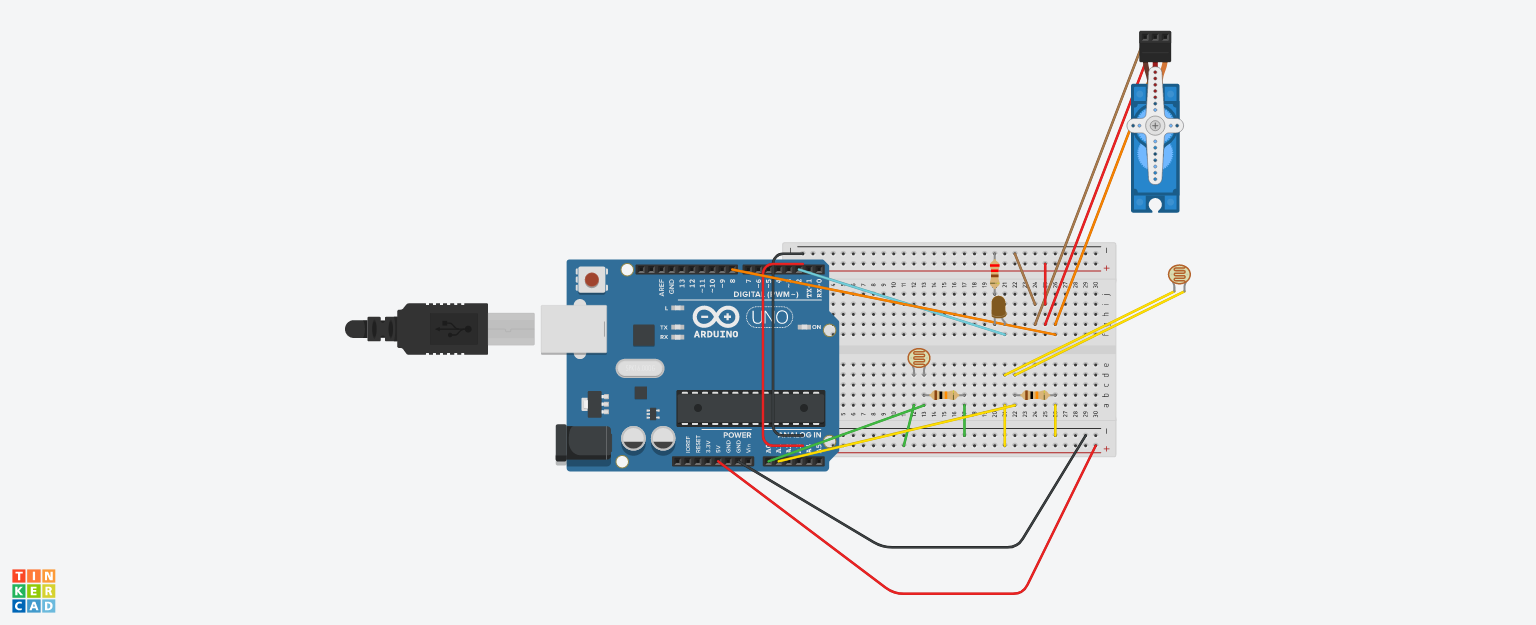
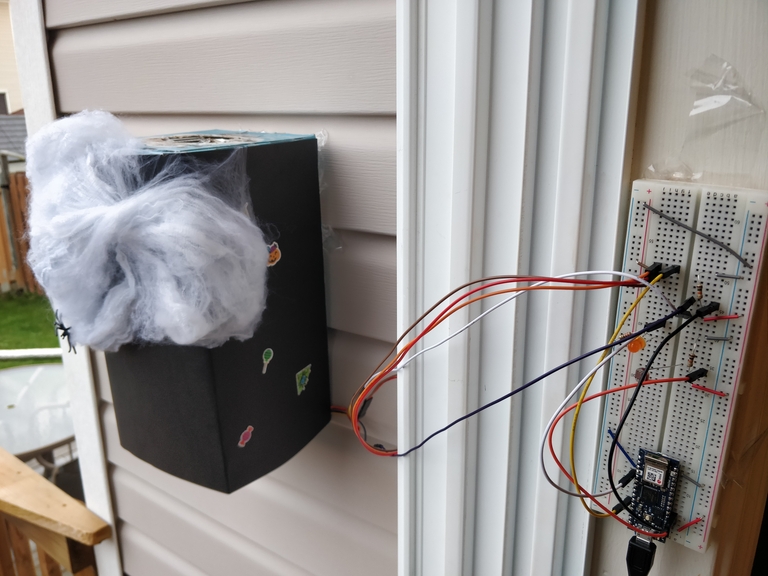
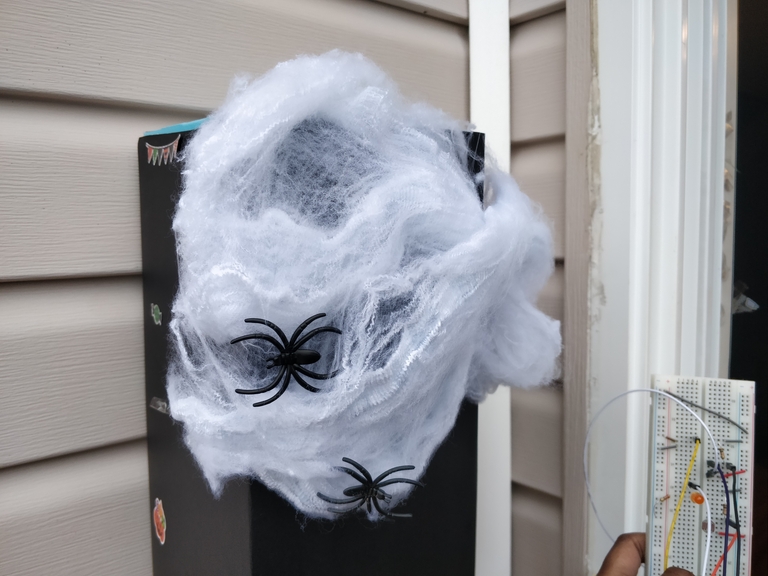
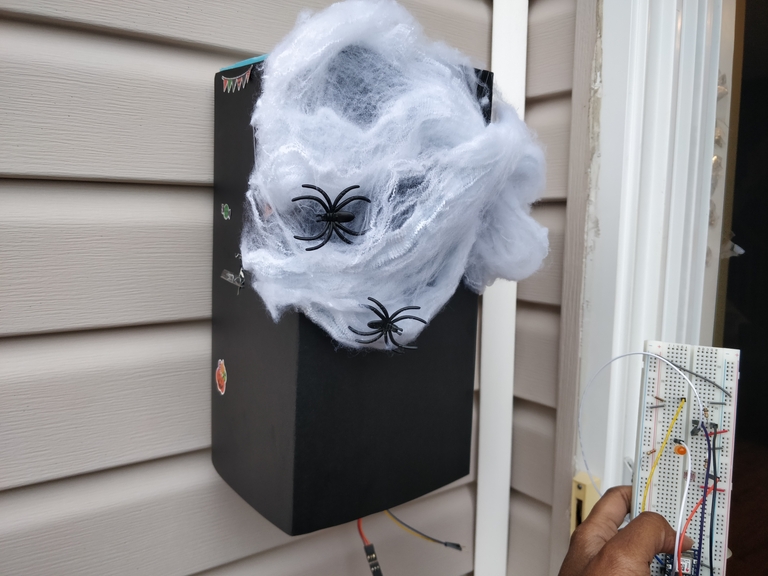
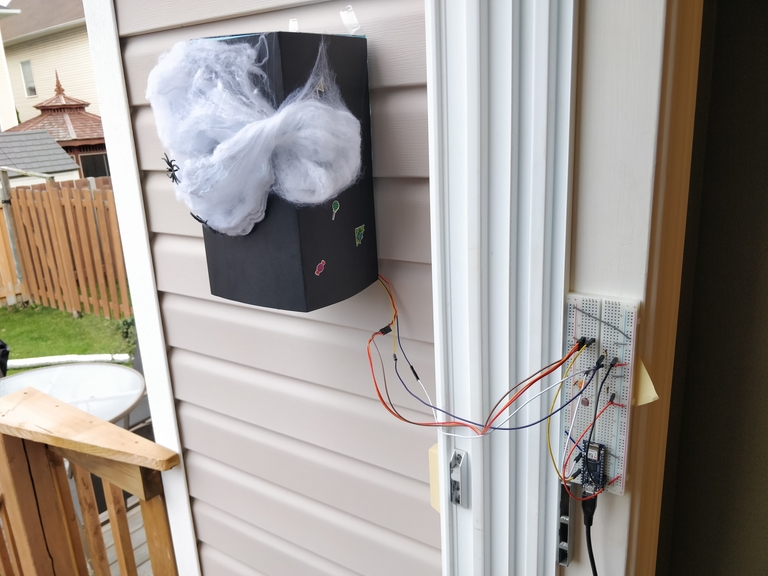

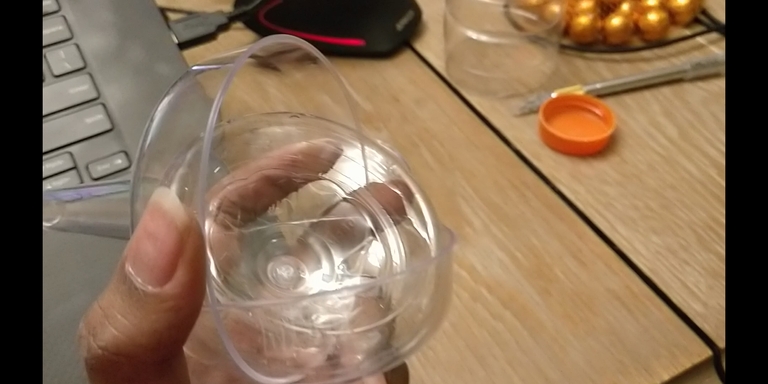
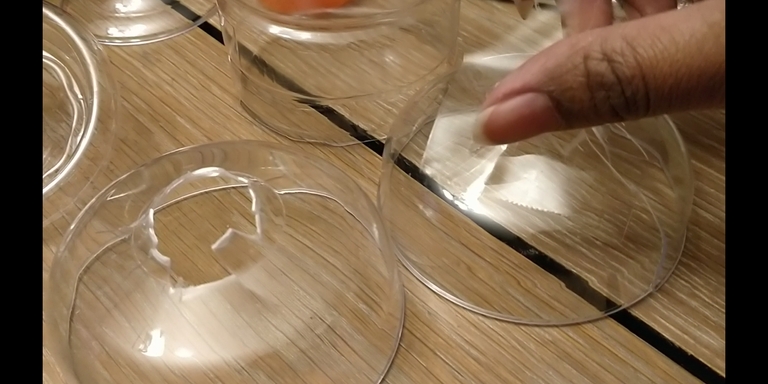
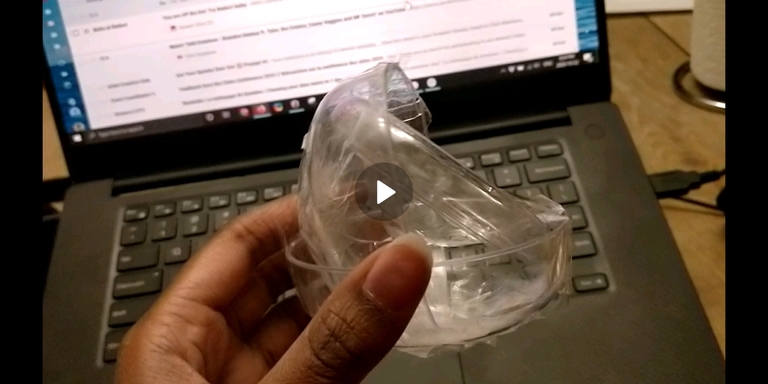

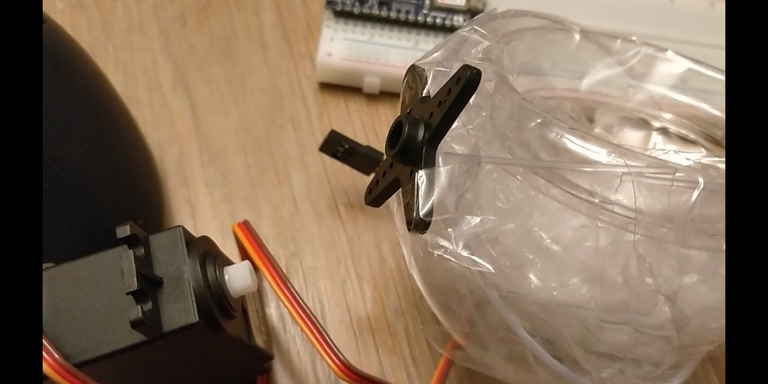
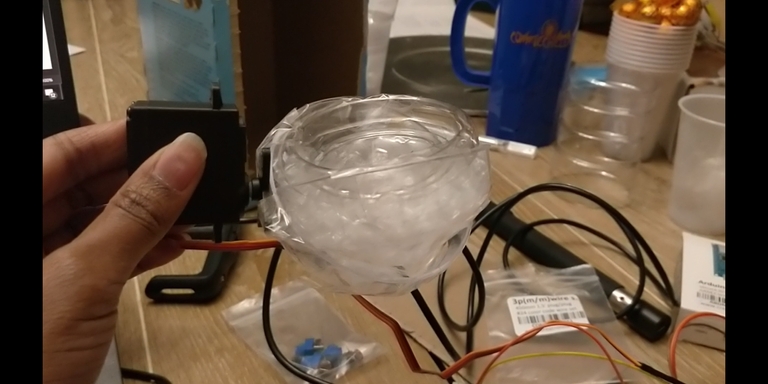
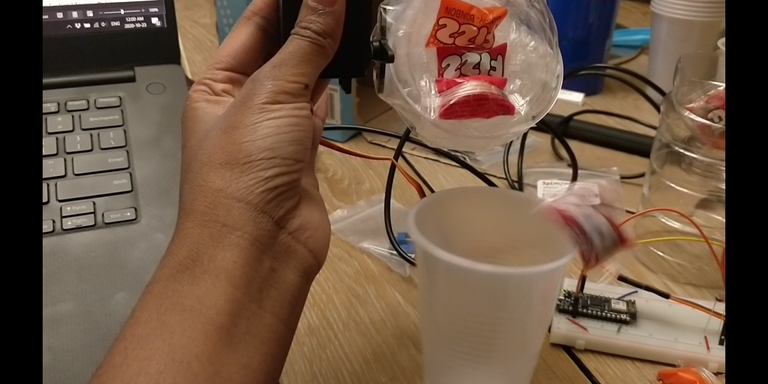
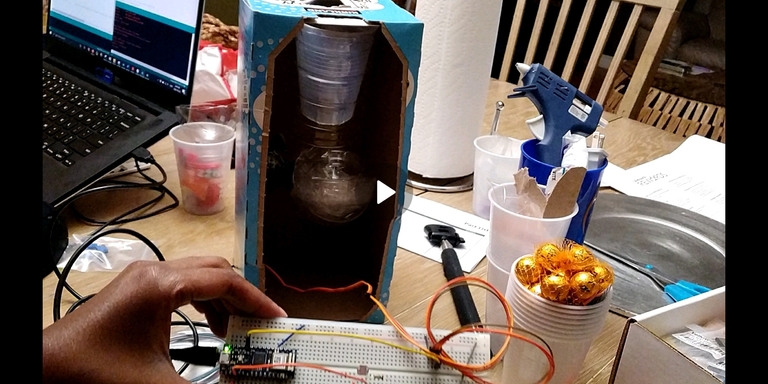
Comments